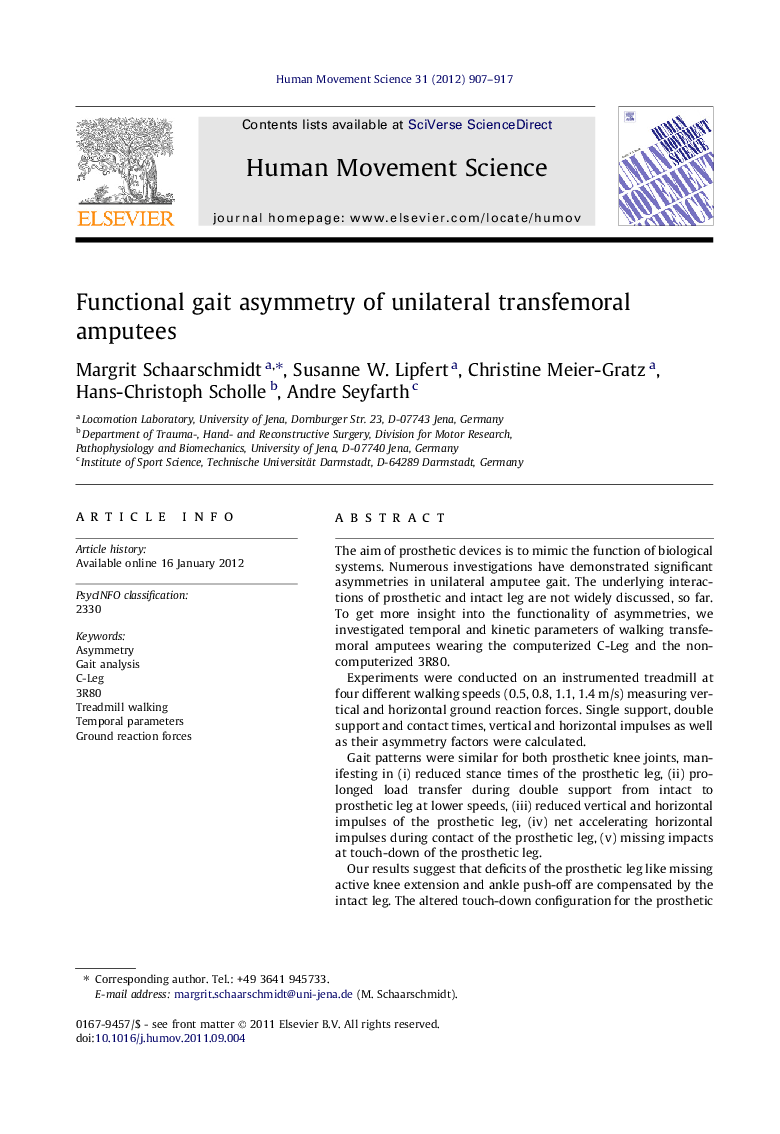| Article ID | Journal | Published Year | Pages | File Type |
|---|---|---|---|---|
| 928473 | Human Movement Science | 2012 | 11 Pages |
The aim of prosthetic devices is to mimic the function of biological systems. Numerous investigations have demonstrated significant asymmetries in unilateral amputee gait. The underlying interactions of prosthetic and intact leg are not widely discussed, so far. To get more insight into the functionality of asymmetries, we investigated temporal and kinetic parameters of walking transfemoral amputees wearing the computerized C-Leg and the non-computerized 3R80.Experiments were conducted on an instrumented treadmill at four different walking speeds (0.5, 0.8, 1.1, 1.4 m/s) measuring vertical and horizontal ground reaction forces. Single support, double support and contact times, vertical and horizontal impulses as well as their asymmetry factors were calculated.Gait patterns were similar for both prosthetic knee joints, manifesting in (i) reduced stance times of the prosthetic leg, (ii) prolonged load transfer during double support from intact to prosthetic leg at lower speeds, (iii) reduced vertical and horizontal impulses of the prosthetic leg, (iv) net accelerating horizontal impulses during contact of the prosthetic leg, (v) missing impacts at touch-down of the prosthetic leg.Our results suggest that deficits of the prosthetic leg like missing active knee extension and ankle push-off are compensated by the intact leg. The altered touch-down configuration for the prosthetic leg enables it to provide forward propulsion while load bearing is largely shifted to the intact leg.
